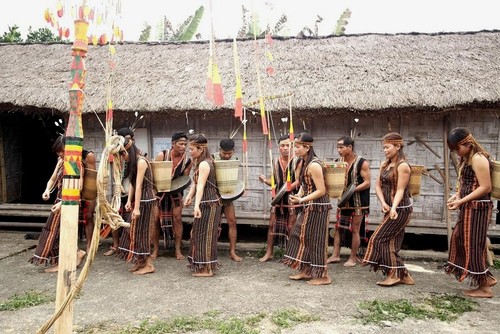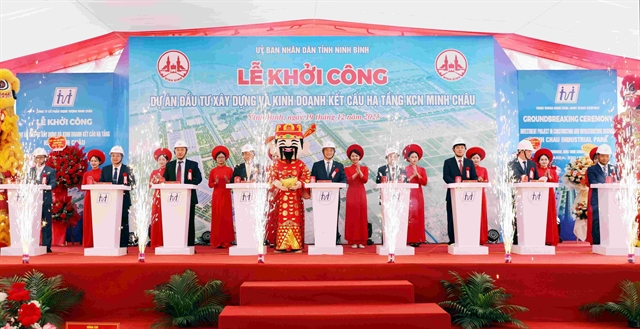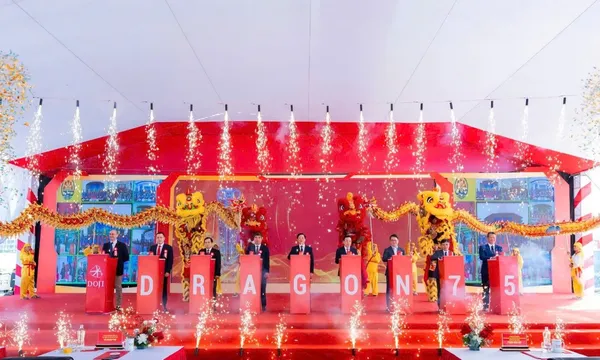 Life & Style
Life & Style


|
| The Yang Brê forest deity worship of the Mạ people takes place in Gia Nghĩa City and Đắk Glong District in Đắk Nông. Photo vovworld.vn |
HCM CITY A slew of new entrants is added onto the List of Intangible Cultural Heritage of Việt Nam in fields such as folk performing arts, traditional festivals, oral literature, scripts, and traditional handicrafts.
According to Minister of Culture, Sports and Tourism Nguyễn Văn Hùng, these include Chèo art of Phú Thọ Province; Mo Mường art of Đắk Lắk Province; rain praying festival of the White Thai people in Mường San Commune, Mộc Châu District, Sơn La Province; and Yang Brê forest deity worship of the Mạ people in Gia Nghĩa City and Đắk Glong District in Đắk Nông.
There are also the Ngư Bridge festival in Cam Lâm Village, Xuân Liên Commune, Nghi Xuân District, Hà Tĩnh Province; Páo Dung singing of the Dao People in Hà Giang Province; Mí season praying ceremony of the Pà Thẻn people in Tân Lập Commune, Bắc Quang District, Hà Giang Province; the boat racing festival in Tịnh Long Commune, Quảng Ngãi City, Quảng Ngãi Province; and the Đom Lơng Néak Tà festival of the Khmer People in Trà Vinh Province.
Vĩnh Long Province has two recognised heritages, including Bội singing art and Văn Thánh Temple festival.
Thái Nguyên Province has three recognised heritages - Ví singing of the Tày people in Định Hoá District; traditional tailoring and embroidery of the Dao people in Hợp Tiếp Commune, Đồng Hỷ District; and Nôm script of the Dao people.
The rice flour making craft in Sa Đéc, Tân Phú Đông Commune and Ward 2, Sa Đéc City, Đồng Tháp Province, has also been recognised as an Intangible Cultural Heritage of the nation in this round.
This craft has been established and developed for over 100 years, and to date, Sa Đéc has over 350 households producing flour, with 2,000 workers involved in production activities and various products made from flour such as hủ tiếu (rice noodle soup), bánh canh (thick noodle soup), phở (beef noodle soup), bún (Huế-styled noodle soup) and bánh tằm (steamed cassava cake).
Quảng Nam Province has two recognised traditional handicrafts. These are the woven hammock craft of Cù Lao Chàm in Tân Hiệp Commune and the craft of making bamboo and coconut leaf in Cẩm Thanhh Commune, both in Hội An City.
Among these, the woven hammock craft remains a unique craft of Hôi An, incorporated into tourism tours and characteristic tourism products.
Hammock weavers are invited to the streets to demonstrate their craft and introduce it to the public.
Meanwhile, the craft of making bamboo and coconut leaf has provided employment for workers, alleviating hunger and reducing poverty locally, while contributing practically to sustainable economic and social development.
With a variety of products meeting customer needs, product consumption is improving.
Additionally, there are other recognised traditional handicrafts in this round such as the weaving of the Thu Lao people in Si Ma Cai District, Lào Cai Province; the making palm sugar by the Khmer people in Tri Tôn District and Tịnh Biên Town, An Giang Province; the brocade weaving of the Xtieng people in Bình hước Province; and making rice paper in Tuý Loan, Hoà Phong Commune, Hoà Vang District, Đà Nẵng City.
Hà Nội has six recognised heritages, including Thầy Pagoda festival in Sài Sơn Commune in Quốc Oai District; Bá Dương Nội Village festival in Hồng Hà Commune in Đan Phượng District; Tường Phiêu Communal House festival in Tích Giang Commune in Phúc Thọ District; Keo Village festival in Kim Sơn Commune in Gia Lâm District; Trạch Xá tailoring craft in Hoà Xá Commune in Ứng Hoà District; and Phú Thượng sticky rice making in Phú Thượng Ward in Tây Hồ District. - VNS




